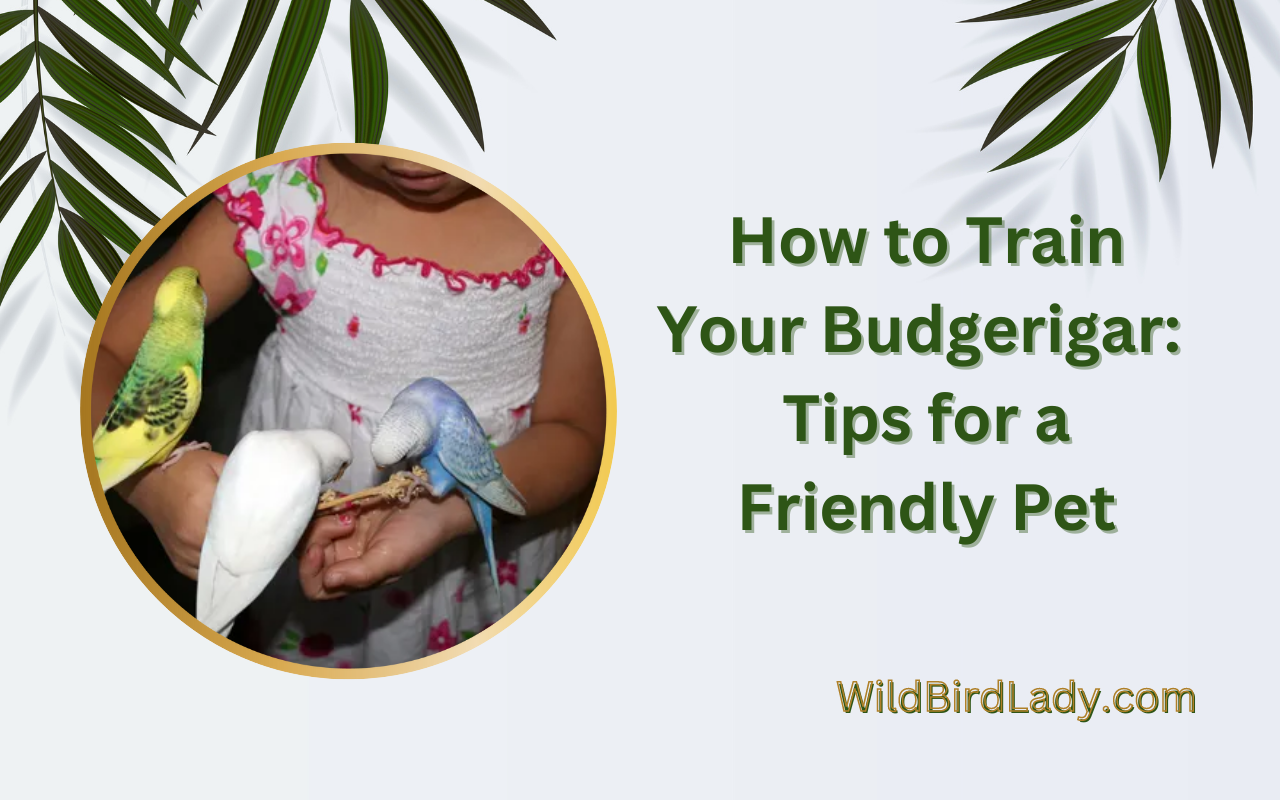Train your budgerigar by spending time with it daily and offering treats as favorable reinforcement. In this way, budgerigars, also known as parakeets, can learn to trust their owners and become affectionate companions.
Budgerigars are some of the most popular pet birds in the world. These small, colorful parrots are known for their intelligence, playful personalities, and ability to mimic human speech. However, not all budgerigars are friendly right from the start. Some may be skittish, shy, or even nippy when they first arrive in their new homes.
So you’ve got a budgie that’s more stubborn than a parrot ordering pizza. Don’t fret!
This article is your secret weapon to transforming your feathered friend into a charming companion. From beak-friendly tricks to squawk-worthy communication skills, we’ve gathered the top tips to make your budgerigar a social superstar. The short answer? Patience, playfulness, and a sprinkle of treats!
Get ready to spread your wings and discover the secrets of budgie training prowess.
Understanding Your Budgerigar
Characteristics Of Budgerigars
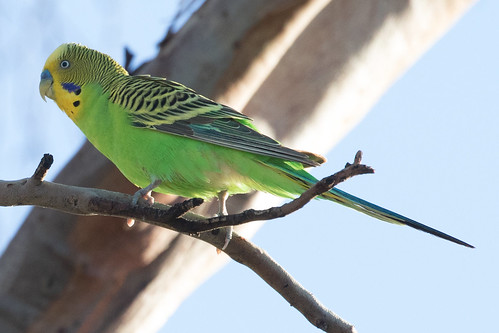
Budgerigars, also known as budgies or parakeets, are popular pets that can be trained to become friendly companions. Understanding the characteristics of budgerigars is essential to train them effectively.
- Budgerigars are small birds that belong to the parrot family, with an average length of 18 cm (7 in) and weight of 30-40 grams (1-1. 4 oz).
- They are highly social animals that prefer to live in flocks and interact with their peers.
- Budgerigars have an excellent sense of hearing and can detect high-pitched sounds that humans cannot hear.
- They are intelligent, curious, and playful creatures that enjoy exploring their surroundings and playing with toys.
- Budgerigars can live up to 10-15 years in captivity and require proper care, nutrition, and veterinary checkups to maintain their health.
Communication Methods And Body Language Of Budgerigars
Budgerigars use various communication methods to interact with other birds and their owners. Understanding their body language and vocalizations can help you interpret their emotions and needs.
- Vocalizations: Budgerigars use different vocalizations to express their emotions, including chirping, singing, chattering, and screeching. They can also mimic words and phrases if trained properly.
- Body language: Budgerigars use their body language to communicate with other birds and humans.
- Fluffing feathers: This can signal relaxation or prepare for sleep.
- Biting or nibbling: This can be a sign of affection or aggression, depending on the context.
- Head-bobbing: This can demonstrate excitement, curiosity, or readiness to play.
- Wing-flapping: This can either mean exercise or nervousness.
- Eye contact: Budgerigars can use eye contact to communicate with their owners or warn other birds to keep their distance.
Importance Of Understanding Your Budgerigar’s Behavior
Budgerigars can be trained to be friendly pets with patience, consistency, and understanding of their behavior.
- Avoid unintentionally reinforcing negative behaviors: Without proper understanding, you may unknowingly reinforce undesirable behaviors in your budgerigar, making it harder to train them.
- Build trust and bond: By understanding your budgerigar’s behavior, you can develop a stronger bond with them and build trust that will make training more comfortable and more successful.
- Promote mental and physical well-being: Understanding your budgerigar’s natural behavior and needs can help you provide proper nutrition, exercise, and enrichment, promoting their mental and physical well-being.
Training your budgerigar to be a friendly pet requires patience, consistency, and a deep understanding of their behavior. By observing their characteristics, communication methods, and body language, you can build a stronger bond with your pet and ensure their mental and physical well-being.
Creating A Safe And Nurturing Environment
When it comes to training your budgerigar to be a friendly pet, it’s crucial to create a safe and nurturing environment for them. Here are some essential tips to follow.
Setting Up A Bird Cage
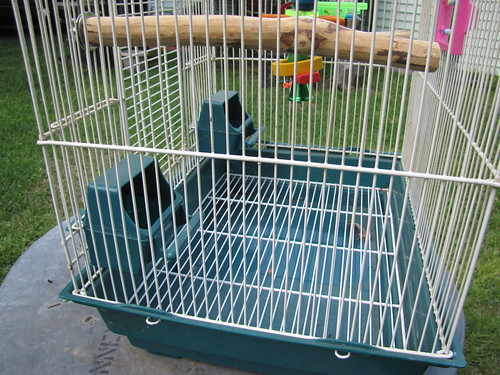
• The cage should be large enough for your budgerigar to move around comfortably.
• Position the cage in a safe and quiet area without too much foot traffic or noise.
• Provide enough natural light, but avoid direct sunlight and drafts.
• Provide perches at various heights and sizes to encourage exercise and movement.
• Avoid placing mirrors in the cage as budgerigars may become too attached to their reflection.
Providing A Proper Diet And A Clean Environment
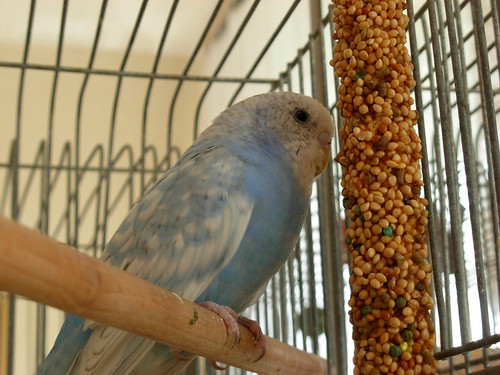
• provide a varied and nutritious diet, including a mix of seeds, pellets, and fresh fruits and vegetables.
• clean and refill food and water dishes daily and replace any leftover fruits and vegetables every 24 hours.
• clean the entire cage weekly, replacing the substrate and removing any droppings or debris.
Low-Stress Environments For Your Budgerigar
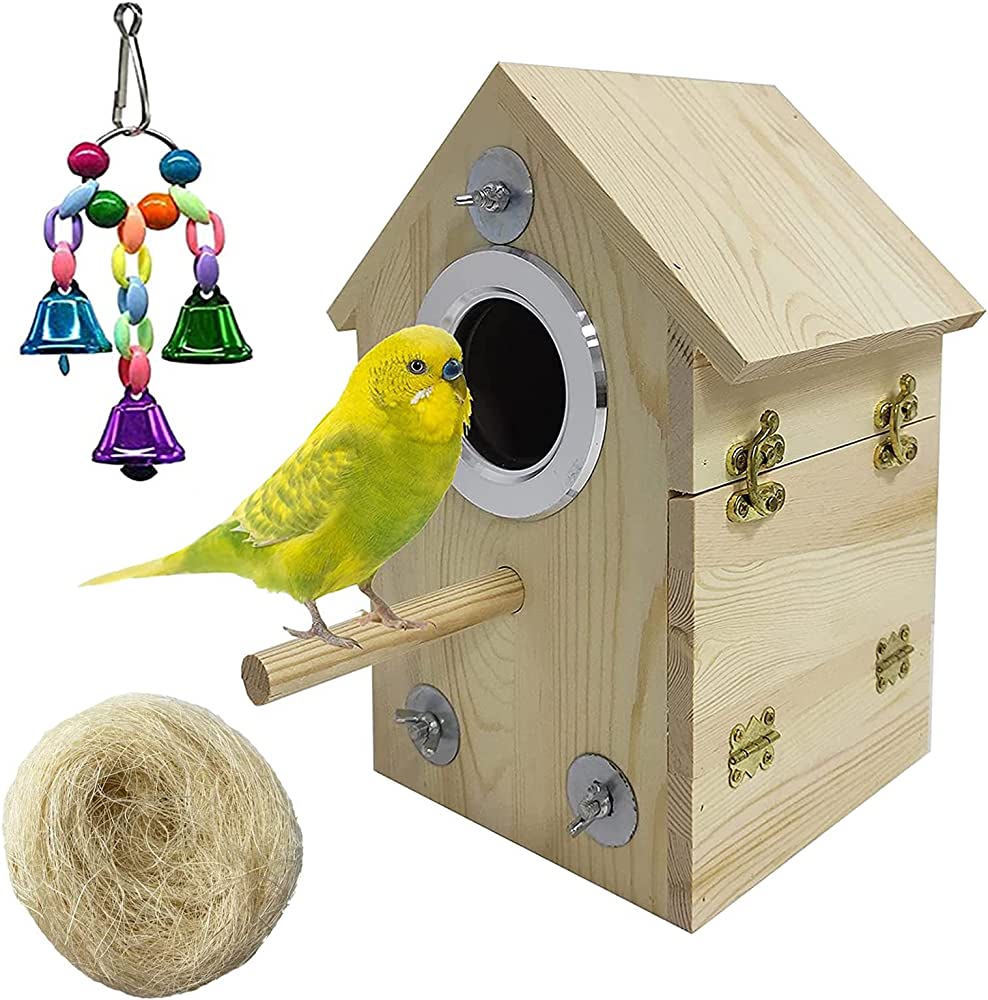
• Avoid placing the budgerigar’s cage near loud noises, such as tvs or stereos.
• Avoid sudden movements or loud noises when interacting with your budgerigar, as this may frighten them.
• Spend time near the cage daily to build trust and familiarity with your budgerigar.
• Provide toys and perches to keep your budgerigar entertained while you’re not around.
By following these guidelines, you can create a nurturing and stress-free environment for your budgerigar. Remember to spend time with your bird regularly, using positive reinforcement to build trust and a strong bond between you and your pet. With patience and care, your budgerigar can become a friendly and affectionate companion for years to come.
Building Trust With Your Budgerigar
Building a bond with your budgerigar is essential for creating a friendly and enjoyable relationship. The more trust in your bond, the more comfortable your budgerigar will be around you. However, building trust takes time, patience, and effort. Here are some key points to consider when building a trustful relationship with your budgerigar.
Importance Of Building A Bond With Your Budgerigar
- Budgerigars are social birds and require socialization to thrive. A friendly relationship benefits both you and your budgerigar by creating a happy and healthy bond.
- A strong bond makes it easier to train and tame your budgerigar. It also helps your budgerigar feel comfortable and secure in their environment.
- By building trust, you create an opportunity for your budgerigar to express their personality and affection, which can be incredibly rewarding.
Taming Your Budgerigar
- Taming your budgerigar involves gaining their trust and acclimatizing them to your presence. It requires time, patience, and a lot of kindness.
- Start by sitting near your budgerigar’s cage without trying to touch them. Let them get used to your presence and the sound of your voice.
- Once they become comfortable, offer them treats from your hand. This will encourage them to come and interact with you.
- When they feel comfortable taking treats from your hand, move on to gentle head scratches and eventually allowing them to perch on your hand.
How To Handle Your Budgerigar Safely
- Handling your budgerigar requires care and attention to ensure their safety.
- Always approach your budgerigar calmly and from the front. This approach makes them feel more secure.
- Use a gentle and slow touch when handling your budgerigar. Avoid sudden movements or rough handling.
- Offer support to your budgerigar when holding them by cupping your hand under their feet and lifting them gently.
- Never squeeze or grab your budgerigar too tightly, as this can cause injury or distress.
Overall, building trust with your budgerigar takes time, patience, and consistency. Creating a strong bond will make your budgerigar feel comfortable and secure around you. With gentle taming and safe handling practices, you can build a happy and trusting relationship with your budgerigar.
Teaching Your Budgerigar Tricks
Budgerigars, or budgies, are social and intelligent creatures that can quickly form a bond with their human companions. One of the most fulfilling aspects of owning a budgie is successfully training them to perform simple tricks. Not only does trick training keep your budgie mentally stimulated and physically active, but it also forges a deeper bond between you and your feathered friend.
In this section, we’ll discuss the importance of teaching tricks to your budgerigar, share some basic training techniques, and recommend tricks to teach your budgerigar.
Importance Of Teaching Tricks To Your Budgerigar
Teaching tricks to your budgerigar has numerous benefits, both for you and your bird.
- Mental stimulation: Trick training stimulates your budgie’s brain, keeping them mentally engaged and preventing boredom.
- Physical activity: Many tricks require your budgie to move around, providing them with much-needed exercise and preventing obesity.
- Bonding: Trick training is an excellent bonding activity, as it requires patience, trust, and positive reinforcement.
- Positive behavior: Teaching your budgie tricks reinforces positive behavior, making them less likely to engage in destructive behaviors like excessive chewing or feather plucking.
Basic Training Techniques
Before diving into trick training, it’s essential to establish a foundation of basic training techniques.
- Targeting: Target training involves teaching your budgie to follow a target stick or your finger. This skill can be used as a building block for more complicated tricks.
- Step up/step down: Teaching your budgie to step onto your finger and off of it again teaches them trust and allows you to move them around more comfortably.
- Recall: Teaching your budgie to fly to you on command is useful for retrieving them if they escape or getting them to come to you for treats.
Recommended Tricks To Teach Your Budgerigar
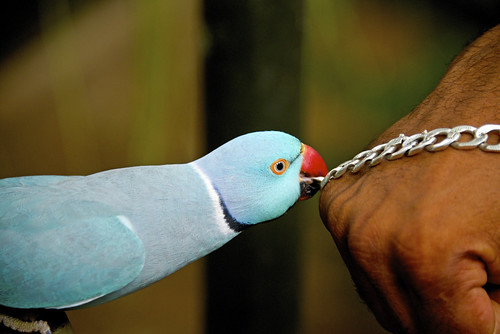
Budgies can learn a wide variety of tricks, but it’s important to start with simple tricks and work your way up to more complicated ones.
- Turn around: Starting with your budgie on one finger, slowly rotate your hand until they complete a full turn. This trick is easy to learn and provides physical exercise.
- Waving: Hold a treat in your hand and teach your budgie to wave by lifting their foot in response to the treat.
- Peekaboo: Hide your face from your budgie and then pop up and say “peekaboo! ” this trick teaches your budgie to recognize faces and can be a fun bonding game.
- Basketball: Teach your budgie to dunk a miniature basketball by rewarding them for bringing the ball to a small hoop.
- Mimicry: Budgies are natural mimics and can be taught to say simple words and phrases. Start with easy words like “hello” or “goodbye” and reward them for repeating the word back to you.
Training your budgerigar to perform fun tricks is an excellent way to improve their mental and physical health while strengthening your bond. Start with basic training techniques and progress to easy tricks, like turning or waving. With patience, practice, and plenty of positive reinforcement, your budgie will be entertaining you with their impressive new skills in no time!
Frequently Asked Questions Of How To Train Your Budgerigar To Be A Friendly Pet
How Long Does It Take To Train A Budgerigar To Be Friendly?
It may take weeks or months to train your budgerigar to be friendly, depending on their age and personality. Consistency and positive reinforcement are key factors in this process.
What Are The Steps To Train A Budgerigar To Be Friendly?
The first step is to establish trust by offering treats and speaking softly to your budgerigar. Gradually introduce your hand and use positive reinforcement to encourage your bird to associate your presence with positive experiences.
How Can I Make My Budgerigar More Comfortable Around Me?
Create a safe space for your budgerigar with plenty of toys and perches. Offer treats and spend time speaking softly near your bird to help them become comfortable with your presence.
How Can I Discourage Aggressive Behavior In My Budgerigar?
If your budgerigar displays aggressive behavior, avoid punishing them. Instead, try to identify the cause of their behavior and modify their environment or routine accordingly. You can also use positive reinforcement to reward good behavior.
Can I Train An Older Budgerigar To Be Friendly?
Yes, you can train an older budgerigar to be friendly with patience and consistency. Start by establishing trust and gradually introducing your hand and positive reinforcement to reinforce desired behaviors.
Conclusion
Overall, training your budgerigar to be a friendly pet takes patience, consistency, and positive reinforcement. With these techniques, your budgerigar can become a beloved member of your family and an entertaining companion. Remember to always approach training with a calm and gentle demeanor, and never force your bird to do something it doesn’t want to do.
Set small, achievable goals and gradually increase the difficulty of the tasks. Along the way, don’t forget to bond with your bird through playtime, talking, and offering treats. With time and effort, your budgerigar will learn to trust you and enjoy human interaction.
By following these tips, you can successfully train your budgerigar to be a friendly pet and create a happy and healthy relationship with your feathered friend.
Latest Posts
The Ultimate List: Top 8 Best Birdwatching Podcasts for Avid Birders
Looking for the top birdwatching podcasts? Here are the eight best options to tune into today! Birdwatching can be a thrilling, immersive experience that brings...
Stop Squirrels in Their Tracks: 10 Effective Ways to Safeguard Your Bird Feeder Pole
To prevent squirrels from climbing your bird feeder pole, use squirrel baffles and slippery poles. Here are ten effective ways to keep squirrels from stealing bird food and damaging bird feeders. ...

